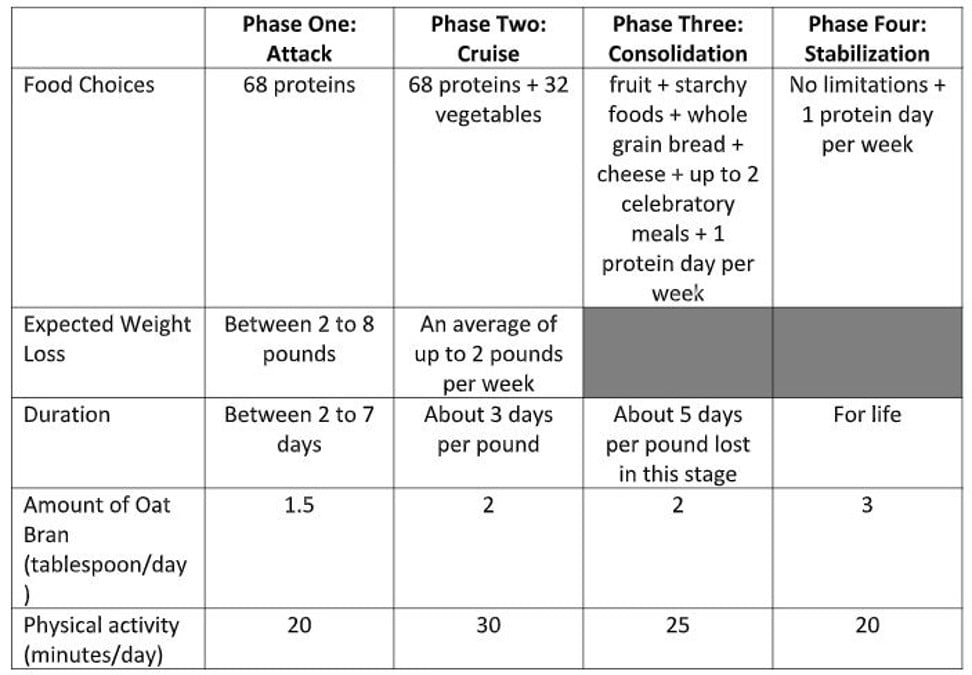Kate Middleton’s Dukan Diet: what is it, and do you have what it takes?

Sources claim Kate Middleton went on the Dukan Diet before the royal wedding with Prince William and after her pregnancy to shed excess weight. With numerous diet regimens to choose from, what makes this European diet so appealing?
You are expected to lose a pound in weight every five days
According to the Dukan Diet website, the diet was created in the seventies by the French general practitioner Dr Pierre Dukan, who recommends a high protein, low-fat and low-carb diet, split into four phases. You are only allowed to eat the 100 specified foods while on the diet.
Phase one: Attack
The first phase lasts from two to five days, and you are allowed to eat unlimited quantities of low-fat and no-fat protein from the 68 food choices, including chicken, tofu, eggs and low-fat yogurt. To prevent constipation, the diet recommends eating 1.5 tablespoons of oat bran and drinking six to eight cups of water a day. It recognises the importance of exercise by recommending a minimum walk of 20 minutes a day.
Phase two: Cruise
In addition to maintaining the consumption of the 68 protein-rich food choices, the oat bran (which is increased to two tablespoons) and the water from the Attack phase, you are permitted to have an additional 32 non-starchy vegetables, such as leafy greens and cucumbers, as part of the Cruise phase.
To enjoy the non-starchy food choices, you need to alternate between a one protein-only day and one protein with a non-starchy vegetable day. You are expected to engage in a brisk walk for at least 30 minutes each day. By rigorously following this phase, you can expect to lose an average of one pound every three days.
Phase three: Consolidation
You are expected to lose a pound in weight every five days. During this stage, you can eat one to two servings of fruit (except for bananas, grapes, figs and cherries), two slices of wholegrain bread, 1.5 ounces of hard cheeses, and one to two servings of carbohydrate-rich, starchy foods. Eating oat bran, drinking water and exercising are still in the picture, but you need to maintain one day of the week to solely eat protein to maintain your “true weight”.
The good news: you can enjoy up to two celebratory meals per week, each meal consists of a starter, an entrée, dessert and a glass of wine.
Phase four: Stabilisation
This final stage liberates dieters from the restrictive set of foods. However, to maintain your weight loss, this phase strongly recommends you to: 1) eat three tablespoons of oat bran each day, 2) eat protein purely for one day during the week, and 3) continue engaging in exercise, such as walking or taking the stairs.
Like any other diet regimen, the Dukan Diet has its advantages and disadvantages.
Pros:
– The Dukan Diet is the regimen for dieters who are keen to follow rules, because it specifically sets out what and how much you should eat.
– The diet encompasses mainly protein, a macronutrient that promotes satiety. While the Attack and the Cruise phases suggest you consume unlimited amounts of protein, moderate amounts of protein can generally stimulate the feeling of fullness. Unless you decide not to stick to the plan, the likelihood of over-consuming protein is minimal.
– The diet encourages you to consume oat bran, a form of dietary fibre that promotes satiety, and to engage in physical activity. Both are essential to lose weight.
– While the plan mainly comprises protein, it becomes less restrictive as you make headway.
Cons:
– We live in a world where there are more than 100 food choices available, so some may find the Dukan Diet too restrictive. When there are limited food choices, you need lots of willpower to plough through to achieve your weight loss goal.
– The rigidity and endless number of rules set by the diet plan might be confusing for some.
– Those who are overweight or obese may notice significant weight loss while following the diet, but sustaining this diet in the long term is questionable.
– The diet fails to recognise that restricting and eliminating major food groups can lead to the risk of nutritional deficiencies in the long run.
A registered dietitian’s verdict
My stance is that the risks involved with the Dukan Diet offset the benefits.
Many other diet plans that offer fewer dietary restrictions could give similar results
Weight loss is inevitable when one restricts food intake, regardless of diet regimen.
The Dukan Diet claims one can easily lose up to two pounds per week by following the established guidelines, but many other diet plans that offer fewer dietary restrictions can give similar results.
The million-dollar question is, how much weight do you want to lose?
Depending on your weight loss goal, is putting yourself through the agony of suppressing your food cravings for a period of time – ranging from a month to several months or more – worth the cause?
This diet fails to teach one to establish healthy relationships with food. When one realises the joys of eating outweighs one’s willpower to reach the goal, the prospect of reverting to old eating habits is high, which may lead to regaining the weight that one had lost – and possibly a few extra pounds.
Enjoying a wide array of healthy foods, combined with physical activity and recommendations from a registered dietitian, is key to achieving a healthy body weight. Before committing to any weight loss plan, speak with a registered dietitian to see if it is right for you.
Want more stories like this? Sign up here. Follow STYLE on Facebook, Instagram, YouTube and Twitter

The diet was created in the seventies by the French general practitioner Dr Pierre Dukan, who recommends a high protein, low-fat and low-carb diet



